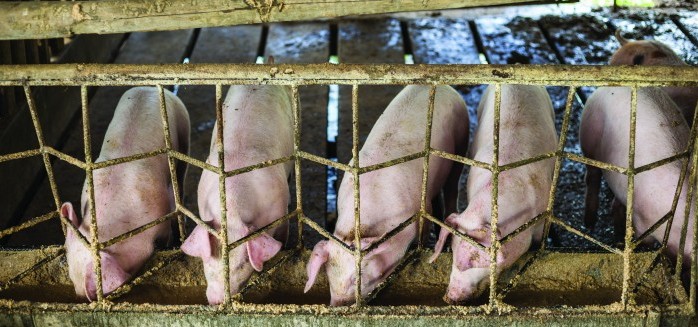China believes it can defy the predictions of global analysts and halt the decline in its pig herd by the end of the year.
Pig numbers had started to grow in China’s bigger pig units, fuelling optimism of a recovery to normal pig numbers in 2020, according to a leading Chinese official.
African swine fever has so far cut China’s pig herd by more than 40%, pushing pig prices to record and prompting a surge in imports from all over the world.
“Various supporting policies and market factors have helped boost confidence in (pig) farming significantly, and enthusiasm for production among small and big farmers is further improving,” Yang Zhenhai, from China’s Ministry of Agriculture and Rural Affairs, said at a briefing on Thursday, Reuters reports.
Pig production has recovered rapidly at farms that slaughter more than 5,000 pigs a year, he said. Pig numbers among these farms reached 44.46 million animals in September, up 0.6% on a month earlier, while sow herds climbed 3.7% to 6.10 million head.
Major producing provinces including Henan, Shandong, and Liaoning also saw a considerable pick-up in pig inventories in September from the previous month, he added.
He also pointed to recovering production and sales of pig feed, with output up 10% in September from the previous month.
This optimism flies in the face of the predictions of most global analysts, however. In its latest global ASF update, Rabobank predicted that China’s herd could be down by 55% by the end of the year, although it predicts the rate of contraction will decline over the remainder of the year due to the control measures in place and the reduced farm numbers.
Rabobank forecasts a 25% pork production decline in 2019, followed by a further 10-15% drop in 2020.
Other analysts also suggest China might be being ambitious in predicting recovery in 2020, given the losses incurred so far and the level of disease still spreading in parts of the country.
Pig production is recovering in the north, but is still falling in the south and southwestern regions, analyst with a Chinese consultancy, who declined to be named, told Reuters.
“If the disease can stabilise and doesn’t reoccur, stocks might start to recover,” she said, but even then would not reach normal levels until at least the second half of 2020.
It also takes about 18 months to build, stock and produce pigs at a new farm, said Pan Chenjun, senior analyst at Rabobank, who described the ministry’s goal as unrealistic.
“In the first half of next year I think the herd will continue to drop,” she said.
Some companies have restocked farms that were infected with the disease only to see it reoccur, she said, while many small farmers have neither the capital or the will to boost their herds.




